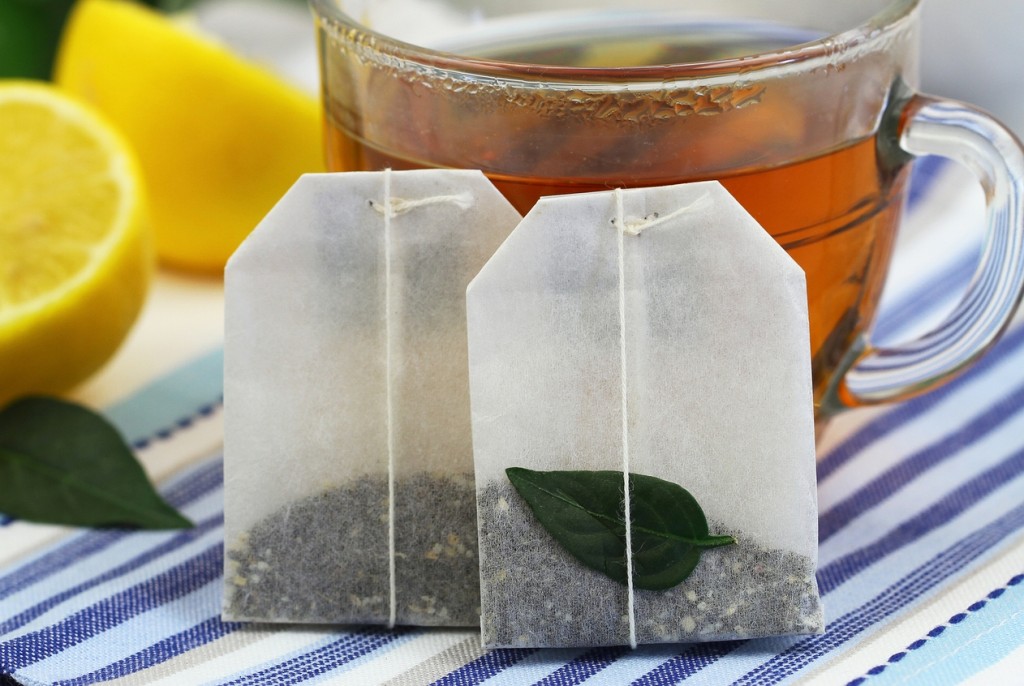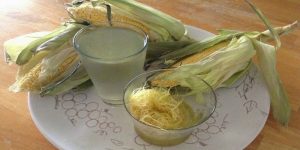
You tea bags are small, porous bags used to infuse the tea. These bags can be sealed and filled with tea leaves, or they can be opened and empty (allowing the tea maker/drinker to fill them with whole tea leaves).
Many tea bags have a drawstring to facilitate removal of the infusion container; however, this is not true for all sachets. Generally, tea bags with a string also bear the name of their producer.

Origin of tea bags
The origin of tea bags is rich in legends. Around the turn of the 20th century, a tea importer named Thomas Sullivan reportedly stumbled upon the invention of the tea bag by accident.
The story goes that he, like many other tea importers of the time. He had a habit of sending samples of his latest imports to potential buyers. At the time, tea was highly valued.
And very expensive by today's standards, so the usual container for these samples was a metal tin can. Sullivan decided to cut costs within a year by sending his samples in hand-sewn silk muslin bags instead of more expensive tea tins.
Many of Sullivan's customers saw this innovative packaging and thought it was an infusion method, not just packaging. They threw the bags directly into the water and were amazed at how easy and simple it was to prepare and clean up afterwards.
They wrote to Sullivan, and he realized what had happened. He started producing more and more of these new ones.”tea bags“, just as others did at the time. Sullivan failed to patent his invention.
Their customers received tea bags his, but patent office records show that others submitted patents starting in 1903! Regardless, it was its commercial (albeit accidental) use that began to spread across the world and resulted in its enormous popularity today.
The History of Tea Bag Types
By the time Sullivan popularized tea bags, many tea bag producers began experimenting with different materials for their tea bags, such as gauze, gauze, cellophane, and perforated paper.
Paper fiber won out as the preferred material for tea bags of the time. Hand-sewn bags were replaced by machine-sewn ones. William Hermanson later invented heat-sealed paper tea bags and sold his patent to the Salada Tea Company in 1930.
In 1952, the Lipton Tea company patented the so-called “flo-thru” bag. Which has four sides instead of two and was intended for those who brewed beer in mugs rather than small teacups.
Like the pyramid bag, this style of tea bag encourages more water to flow. Through the tea leaves and produces a faster and stronger infusion. Amid heavy marketing, Tetley launched the round tea bag in 1992.
In recent years, so-called “tea socks” have become popular among some whole-leaf tea drinkers. They are not tea bags in the true sense of the word.
But large infusors similar to tea bags made from similar materials and are disposable. They can be stuffed with the leaves of your choice and folded, cut or tied to infuse, then thrown away.
Quality tea bags
Many tea connoisseurs are offended by the use of tea bags. The reasons are three. Firstly, the tea bags they restrict the amount of space the tea leaves have to unfold during the steeping process.
This means that whole leaf teas will likely release only a little of their flavor and nutrients in the cup or pot and that much of the nuance and benefits found in a high-quality tea will be lost when it is steeped in a tea bag.
The second reason why tea connoisseurs often disregard tea bags follows from the first reason. Early in the history of tea bags, their suppliers quickly realized something.
That your regular tea leaves couldn't fully expand into tea bags. Then, they began breaking or chopping the leaves so they would have more surface area exposed to the water.
And to infuse more completely despite limited infusion space. This move toward more broken leaves resulted in the use of many types of broken tea and the development of CTC tea.
These teas are (in general) inferior to whole leaf teas in every way except one the ability to steep quickly and fully in a limited space.
Popularity of tea bags
Although any tea connoisseur will tell you that tea is much better when left to freely steep (and when it's not made with the types of leaves used to fill the vast majority of tea bags out there).
You tea bags are enormously popular in much of the world. Statistics on tea bag preference/use show that tea bags are used by as many as 98% of Americans and 96% of UK residents.
Additionally, tea bags are widely used in India, Japan and other places. Initially, the tea bags they were popular only in the United States, in part because they were invented in the United States.
And partly because Americans simply love anything that saves them time and effort. (I say this as an American!) They were widely available in the United States in the 1920s.
The Convenience of Tea Bags
It is often said that the tea bags make preparing and drinking tea extremely convenient and easy. All you need to make tea is a tea bag in hot water and a vessel, usually a teapot or mug.
Once it has brewed to the desired strength, the tea bag can be removed and set aside.

Uses of tea bags
You tea bags are, as you can imagine, most commonly used to make tea for drinking. However, there are other common ways to use tea bags. These uses include:
Removing dark circles, perfuming or deodorizing spaces in the home or office (as an herbal sachet would be used), and cooking with tea
For filling tea bags cooking with herbs and spices to make infusions. And decoctions other than true teas (such as chamomile, lavender, and other herbal teas)
Tea bag shapes
Over the years, there have been many innovations in the formats of tea bags. The first tea bags were shaped like a sack. Later, the tea bags they became flat and rectangular.
In the 1950s, Lipton invented the multi-dimensional “Flo-Thru” tea bag, which gave leaves more room to open. And in recent decades, round tea bags, pyramid tea bags.
And even rod-shaped tubes made from perforated foil have been added to the growing list of tube shapes. tea bags around. Now, there's even a stick-shaped perforated film that needs to be stirred to infuse.
Although these new ways may seem new to many consumers. Researchers have shown that shape doesn't matter — it's all about size.
This means that the tea bags Round ones are no better than square or rectangular ones. But 3-D shapes (like pyramid bags) are probably a better choice because they give the leaves more room to infuse.
Tea bag materials
You tea bags They are typically made from filter paper, cotton muslin, or food-grade “silky” plastic. They can be sealed with glue, a clamp, or nothing at all.
They usually have a bleached or unbleached cotton cord. And a paper label indicating the brand or type of tea contained in the bag. Filter paper tends to be the standard material for tea bags.
Although it is bleached, it is relatively safe for the environment and is non-toxic. Cotton muslin is a more specialized product. It is often unbleached, but tends to add flavor to the black tea.

